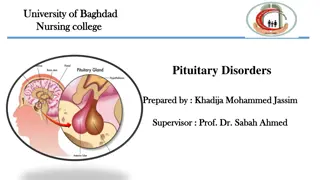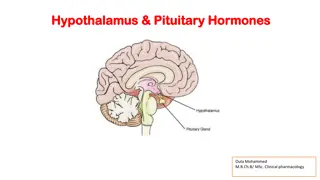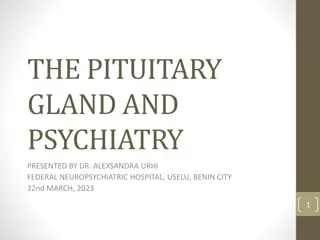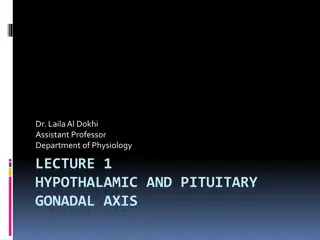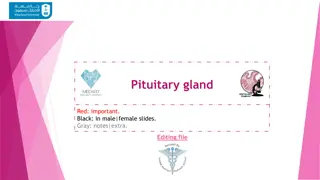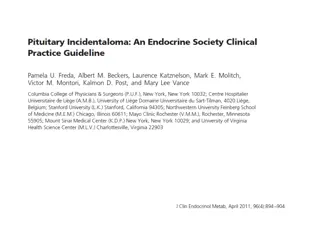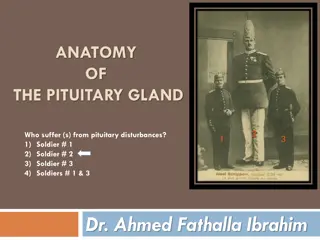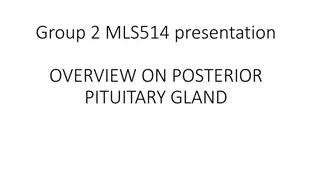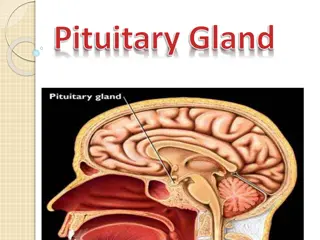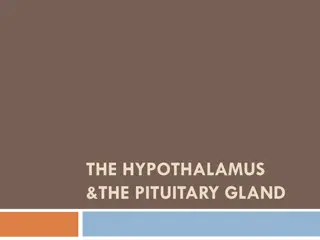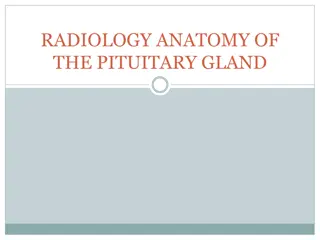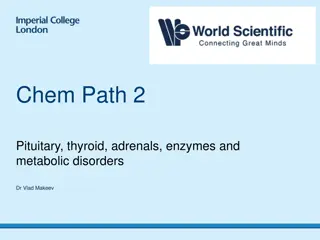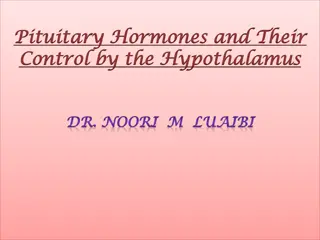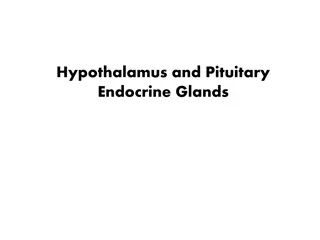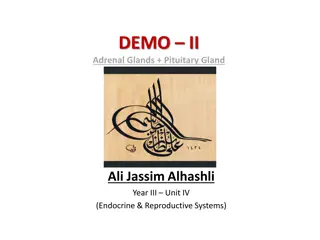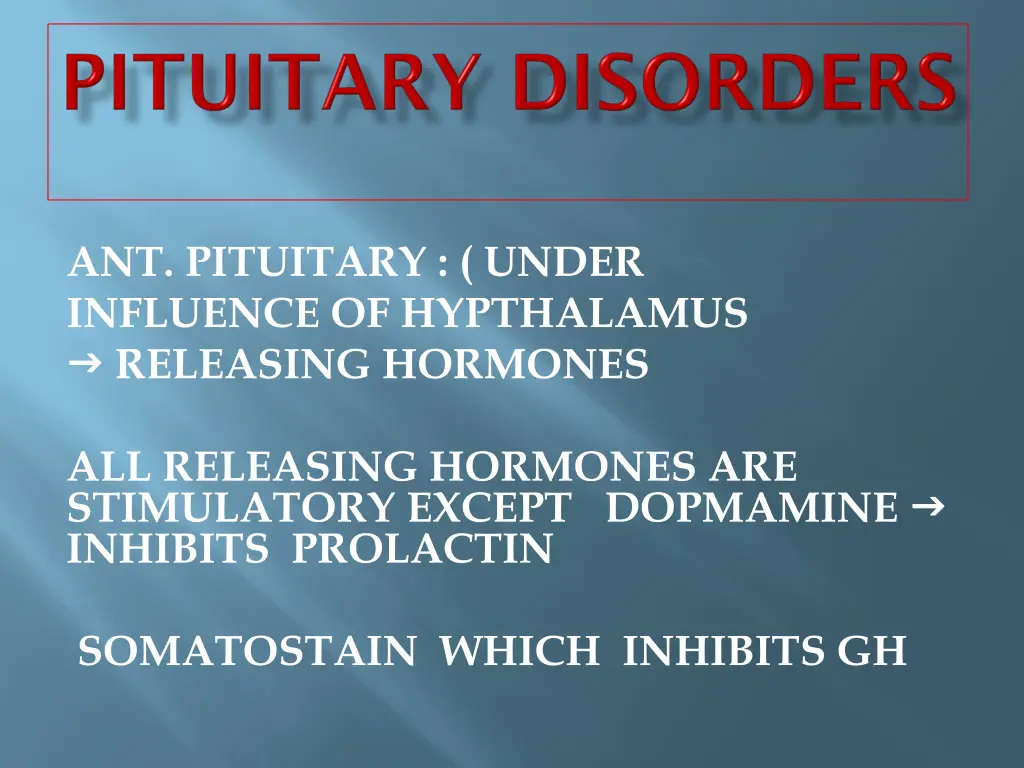
Understanding Pituitary Gland and Hormonal Regulation
Delve into the intricate workings of the pituitary gland under the control of the hypothalamus, the role of releasing hormones, negative feedback mechanisms, consequences of pituitary tumors, and conditions like acromegaly and gigantism. Explore the complex interplay between hormones and their impact on various bodily functions.
Download Presentation

Please find below an Image/Link to download the presentation.
The content on the website is provided AS IS for your information and personal use only. It may not be sold, licensed, or shared on other websites without obtaining consent from the author. If you encounter any issues during the download, it is possible that the publisher has removed the file from their server.
You are allowed to download the files provided on this website for personal or commercial use, subject to the condition that they are used lawfully. All files are the property of their respective owners.
The content on the website is provided AS IS for your information and personal use only. It may not be sold, licensed, or shared on other websites without obtaining consent from the author.
E N D
Presentation Transcript
ANT. PITUITARY : ( UNDER INFLUENCE OF HYPTHALAMUS RELEASING HORMONES ALL RELEASING HORMONES ARE STIMULATORY EXCEPT DOPMAMINE INHIBITS PROLACTIN SOMATOSTAIN WHICH INHIBITS GH
NEGATIVE FEED BACK MECHANISM
PRODUCED BY GH PRODUCING ADENOMA , IN CHILDHOOD IT IS CALLED GIGANTISM. CLINICAL FEATURES : 1. DUE TO THE TUMOR MACRO IN SIZE) (USUALLY ADENOMA : HEADACHE LARGE MORE THAN 1 CM , DIZZINESS . BITEMPORAL HEMIANOPIA . 2. DUE TO INVASION AND DESTRUCTION OF THE PITUITARY SECRETION OF OTHER HORMONES LACK OF
PEGSIVOMANT Growth hormone receptor antagonist
Causes Causes 1. Infarction : Sheehan s syndrome 2. Iatrogenic : Radiation, surgery 3. Invasive : Large pituitary tumors CRANIOPHARYNGIOMA CRANIOPHARYNGIOMA 4. Infiltration : Sarcoidosis, hemochromatosis 5. Injury : head trauma 6. Infections : TB 7.Idiopathic
DEPENDS ON HORMONES LOST 1. Lack of FSH LH : 1. Hypogonadim: amenorrhea 2. Lack of TSH: hypothyroidism 3. Lack of ACTH: adrenocortical insufficiency 4. Prolactin deficiency: FAILURE OF POSTPARTUM LACTATION 5. If all of the above: PANHYPOPITUITARISM 6. In children: GH: short stature
1. Clinical: Hx and Px 2. Biochemical studies: a) Baseline studies: TSH, ACTH, FSH, LH, prolactin GH b) Stimulation: 1) TRH 2) LH-RH 3) Insulin hypoglycemia 3. Radiological : - Lat skull x=ray - CT - MRI
1. Remove cause 2. REPLACEMENT THERAPY; depends on hormone lost 3. THYROXINE in 2 hypothyroidism 4. Hydrocortisone for 2 hypoadrenalism 20 mg at AM 10 mg at PM 5. Growth hormone : for children 6. Testosterone: monthly injections 7. Estrogen + progesterone 8. For induction of ovulation FSH + LH

